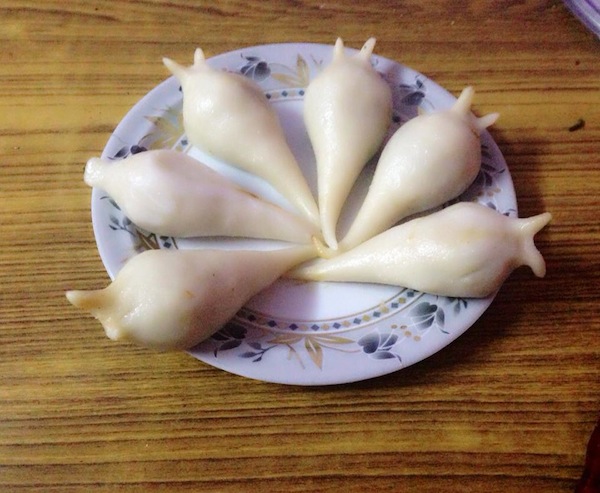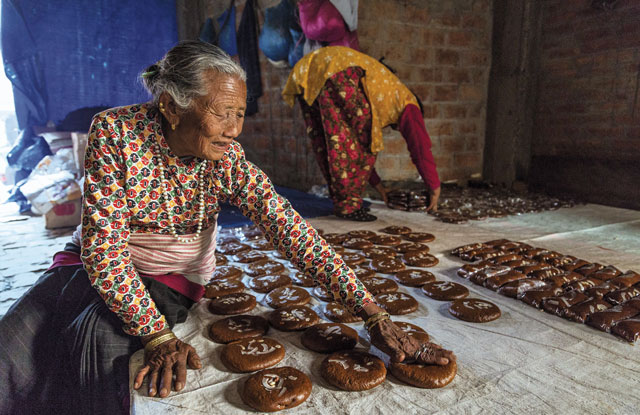Introduction
Nepal, a country in the heart of the Himalayas, boasts a rich tapestry of culture and cuisine. Among its many culinary treasures is Chaku, a traditional Nepali delicacy that locals and tourists enjoy. In this article, we delve into the essence of Chaku, its preparation, ingredients, cultural significance, and place in Nepali society.
Beyond its culinary appeal, It symbolizes Nepali culture, representing sweetness, abundance, and prosperity. It is often used in religious ceremonies, rituals, and social gatherings to invoke blessings and good fortune. Additionally, It is a nostalgic reminder of childhood memories, family traditions, and festive celebrations, evoking warmth, joy, and togetherness.
Chaku, often referred to as Nepali molasses, is a sweet delicacy deeply rooted in Nepali culture. In English, it is translated as molasses or treacle. It is a thick, dark syrup made from concentrated sugarcane juice or other sources of sugar. Making Chaku involves boiling the sugarcane juice until it reaches a thick, dense consistency, creating a sweet, flavorful, and aromatic treat.
Chaku Yomari
Chaku Yomari is a unique variation of the traditional Yomari dish, a famous Nepali sweet typically made during the Yomari Punhi festival. Yomari is a rice flour dumpling filled with sweet substances such as Chaku, sesame seeds, or coconut. Chaku Yomari, therefore, features Chaku as its primary filling, adding a rich and indulgent flavor to the already delicious treat. It is often enjoyed during festive occasions and celebrations, symbolizing prosperity and happiness.

How is Chaku Made?
Making it a labor-intensive yet rewarding endeavor steeped in tradition and cultural significance. It begins with extracting juice from sugarcane, which is then heated in large cauldrons over an open flame. The juice is stirred and boiled until it thickens and caramelizes, forming Chaku.
Skilled artisans, known as Chakupār (Chaku-makers), play a crucial role in the preparation process, using their expertise to ensure the perfect consistency and flavor of the molasses. As the mixture reduces, impurities are skimmed off the surface, leaving a smooth and glossy syrup behind. Once the desired thickness is achieved, the Chaku is poured into molds or flat surfaces to cool and solidify.
Variations of chaku can be found across different regions of Nepal, each with unique flavors, textures, and preparation methods. From the mountainous regions of the Himalayas to the fertile plains of the Terai, it takes on different forms and nuances, reflecting the diverse culinary traditions and local ingredients of each area.
These regional differences enhance the depth and complexity of the culinary landscape of Nepal, showcasing the country’s cultural diversity and culinary heritage.
What is Chaku Made of?
It is primarily made from sugarcane juice, although it can also be produced from other sources of sugar, such as date palm sap or jaggery. The critical ingredient is the natural sweetness derived from these sources, which transforms the boiling process to produce the unique taste and feel of Chaku.
Also Read: Maghe Sankranti Food: A Culinary Celebration in Nepal
In addition to sugar, sugarcane juice may contain traces of minerals and nutrients, making it a relatively healthier alternative to refined sugar. It is free from additives and preservatives, retaining its natural goodness and authentic taste.
Chaku Price in Nepal
The price of Chaku in Nepal varies depending on several variables, including location, quantity, and quality. Due to increased demand and overhead costs, it may be sold at higher prices in urban areas and tourist hubs. On the other hand, in rural areas where sugarcane cultivation is prevalent, Chaku may be more affordable and readily available.
Typically, It is sold in small packets or containers, ranging from a few hundred grams to a kilogram or more. Prices can range from a few Nepalese Rupees to several hundred, depending on the size and quality of the product.
On average, a small packet or container of chaku may cost anywhere from NPR 50 to 200, while larger quantities or specialty varieties may be priced higher. During festivals and special occasions, the demand for chaku tends to surge, leading to temporary price increases in local markets.
Cultural Significance
Chaku is highly culturally crucial in Nepal, especially during festivals and celebrations. It is often exchanged as a token of goodwill and hospitality, symbolizing prosperity and abundance. During festivals such as Maghe Sankranti, it plays a central role in various rituals and offerings, reflecting its deep-rooted connection to Nepali traditions and customs.

Moreover, Chaku serves as a nostalgic reminder of childhood memories for many Nepalis, evoking sentiments of warmth and togetherness. Whether consumed as a treat on its own or combined with traditional dishes, it is a beloved delicacy cherished by generations.
While chaku production is deeply rooted in tradition, it also has issues with sustainability and environmental impact. If not managed sustainably, sugarcane, the primary source of molasses, can adversely affect soil health, water resources, and biodiversity.
Deforestation, pesticide use, and labor practices can further exacerbate these challenges. However, initiatives aimed at promoting organic farming practices, supporting small-scale producers, and raising awareness about sustainable consumption are helping to address these issues and ensure the long-term viability of chaku production.
Conclusion
In conclusion, Chaku is a testament to Nepal’s rich culinary heritage and cultural diversity. Its unique flavor, preparation process, and cultural significance make it a cherished delicacy enjoyed by people of all ages.
Whether savored during festive occasions or as a sweet indulgence on a regular day, It embodies the essence of Nepali cuisine, bringing joy and sweetness to every bite. So, the next time you visit Nepal, savor a taste of Chaku and experience the true essence of Nepali hospitality and tradition.
It is more than just a confectionary delight; it is a cultural treasure that embodies Nepal’s rich heritage and traditions. From its humble origins as a ceremonial offering to its modern-day presence in culinary creations, it has stood the test of time, remaining a beloved symbol of sweetness, unity, and tradition.
As we continue to celebrate and preserve the legacy of chaku, let us savor its sweetness and cherish the memories and moments it brings.
Read More: Delicious and Nutritious: Authentic Bhakka Recipe for a Flavorful Meal

